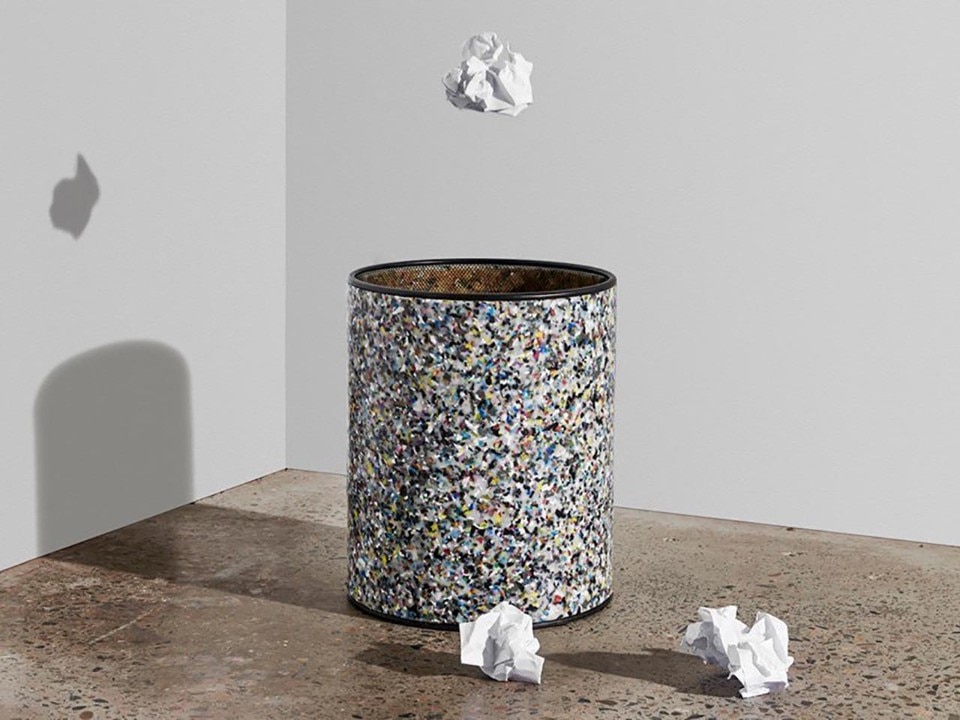Serial object par excellence, the waste bin inherited from its ancestor, the vase, its container function and even, sometimes, the same formal typology. And yet, it was thanks to the industrial revolution that the bin appeared and spread as a new, indispensable object of modernity. Whether we are talking about a rubbish bin or a wastepaper basket, the bin was first and foremost the product of a fast-growing society that began to deal with waste, systematically and on a vast scale.
It was in fact in 19th-century England that the waste bin began to be mass-produced, while previously it had been hand-made as a luxury good for the aristocracy. Its evolution in the following century was still dedicated to mass society. The revolution of white-collars with the arrival of large offices required the presence of a paper basket at every desk, while the plastic revolution gave new impetus to the production of low-cost bins with increasingly sculptural shapes, far from the knurling and grooving of the first galvanised metal models.
Today, digitalisation is contributing to reducing the size and presence of the waste bin in the office, and requires us to totally rethink the household bin, which is multiplying to accommodate recycling containers. In a society that is becoming increasingly virtual and aims at zero waste, is the waste bin destined to change its nature? This is what one might think when observing recent examples that play with more unpredictable forms and look like empty pockets or containers for personal items. Even if it is likely we’ll be using bins less and less, we find it hard to believe it will disappear: it is more likely that the weight of real life, with its waste and need to conceal things, will continue to make bins an unavoidable accessory to our existence.























